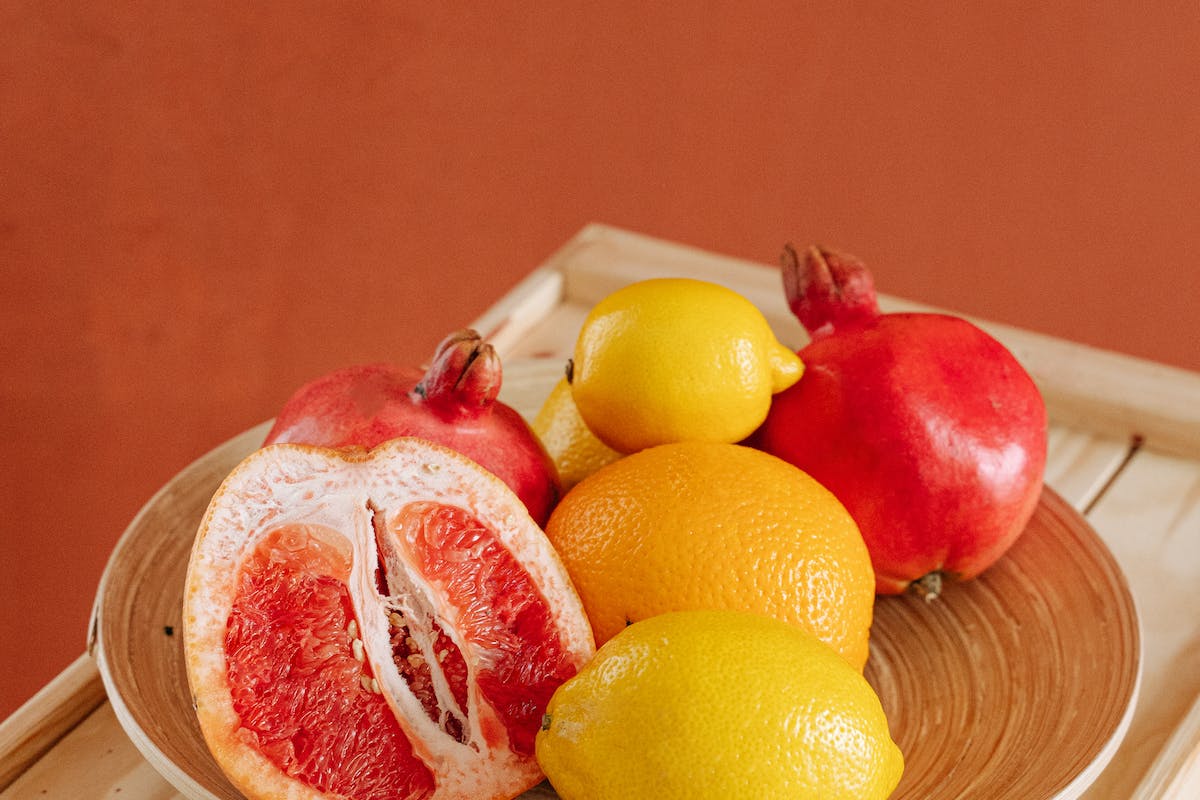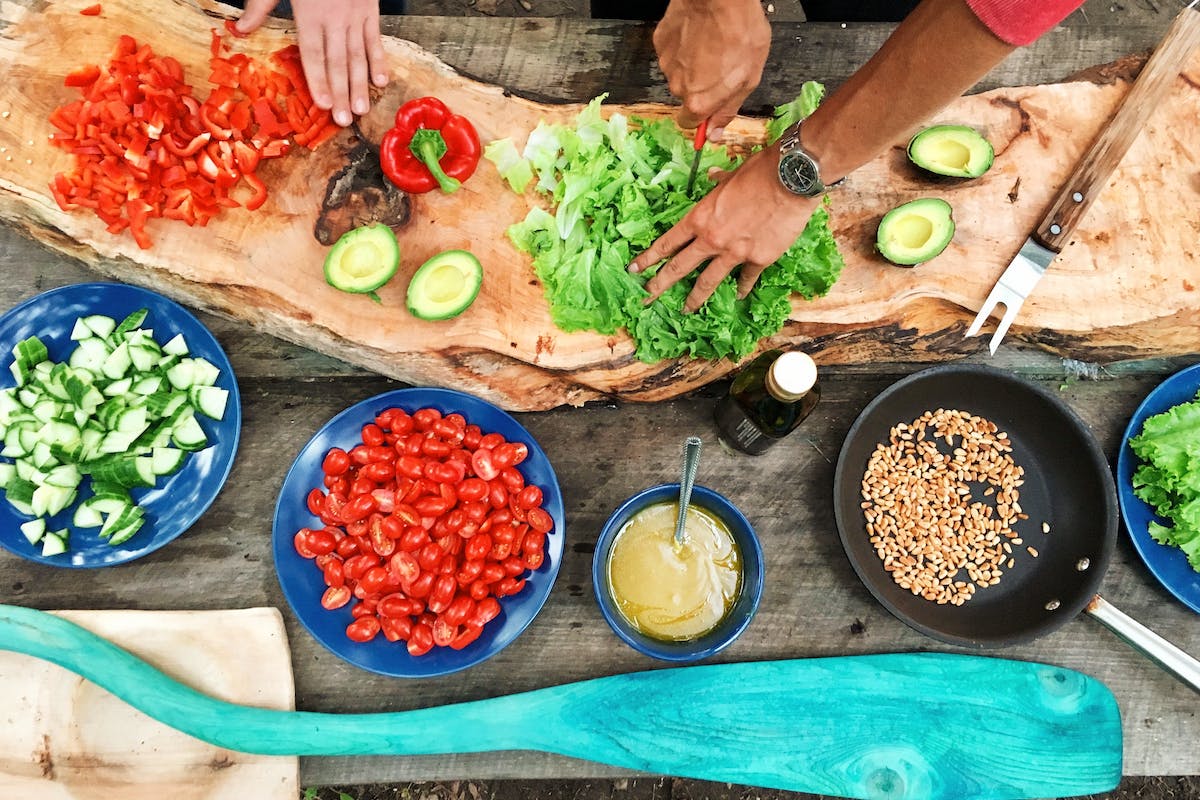- The first 1,000 days greatly impact the child’s lifelong health.
- You should create a nutritious baby food chart depending on the child’s age.
- Babies should have a balanced diet containing iron, vitamins and proteins.
- When introducing your baby to new foods, like peanut butter and strawberry allergies, look out for common food allergies.
- The BLW approach encourages self-feeding and self-discovery by letting the baby try small bites of the family food.
Finding the best selection of foods to give your baby is especially important in the baby’s early development. Newborns grow the most during their first year, so creating a nutrient-rich baby food chart is crucial for the child’s further growth.
As parents, we want the best for our little ones. There isn’t a better time to start setting good eating habits. Giving your baby various nutritious foods will establish healthy eating patterns for life. Let’s review everything you need to know to create the perfect baby food chart!
The Importance of Nutrient-Rich Baby Food
We see the importance of nutrient-rich baby food in its long-term effects on health and general child growth.

Early Childhood Nutrition
Children grow the most during the first year of their life. That’s why nutrition plays a crucial role in the baby’s development. A study shows that nutrition during the first 1,000 days greatly impacts the baby’s metabolism and lifelong health.
Building a Strong Foundation
Pay close attention to early childhood nutrition and build a strong foundation for a healthy life. Breast milk usually provides a lot of the needed nutrients. However, once the baby is old enough, it should eat various nutrient-rich foods, such as fruits, vegetables, and even meat.
Such foods consist primarily of fats and fatty acids, responsible for retinal and brain development, and carbohydrates, which give us energy. For example, a fatty acid or carbohydrate deficiency will lead to slower growth and less energy. If the baby has an iron or zinc deficiency, that could lead to anemia.
Creating a Nutrient-Rich Baby Food Chart
Unravel how to develop your own personal 1-year baby food chart to keep your baby healthy and upbeat. Here are a few recommendations.
Introduction to Baby Food Stages
There are rules to introducing different kinds of food to your baby’s diet during the first year. Here are the stages of introducing new foods to the 6 to 12 months baby food chart:
- Stage 1: Month 1, breastfeeding or formula milk is the main nutrition.
- Stage 2: Months 4 to 6, feed up to 6 times a day and introduce purees.
- Stage 3: Over 6 Months, start introducing solid foods and textured purees.
- Stage 4: Introduce chunky soft foods and finger foods.
Nutrient Priorities
In the first 6 months, breastfeeding provides the essential nutrients for your baby. Once the 6 months pass, babies need their caloric intake of iron, calcium, and vitamins through different foods. Great examples of such foods are dry infant cereal with iron, fruits, and veggies full of vitamins. You can also introduce meat and protein, such as eggs and cheese, and add simple snacks like cookies and crackers to your baby food chart.
Balanced Meals
The food varieties should be healthy for your newborn, and a 10-month baby food chart will help you learn what food your child should eat. Here are some dietary examples to look into:
- 1 to 6 month baby food chart: breastmilk or formula, veggie and fruit purees, mashed potatoes and carrots.
- 6 to 9 month baby food chart: rice cereal to breastmilk or formula, finger foods.
- 10-month baby food chart: soft, cooked vegetables like green beans, spinach, and soft, ripe fruits.
- 11 to 12-month-baby food chart: soft pasta, mashed eggs and boneless mashed fish.
Baby Food Allergies and Intolerances
Look out for food allergies or intolerance to specific foods. These are serious conditions that may lead to health difficulties.
Common Allergens
Babies can be allergic to all sorts of things. Every child is different, so slowly introduce new foods. The most common foods that may cause allergies are:
- Eggs
- Peanuts
- Soy
- Wheat
- Fish
Research shows that about 1.4% of children are allergic to peanuts, but avoiding eggs or peanuts in early childhood may raise the risk of allergy.
Allergen Testing
When a child reacts to specific foods, the symptoms to look for are swelling, itching, red skin, shortness of breath, etc. You should take your baby for allergy testing because this might be an allergic reaction.
There are significant advancements in allergy testing. New methods include multiparameter immunoblot, molecular allergology, and cross-reactive carbohydrate determinants.
Homemade vs. Store-Bought Baby Food
Parents usually have difficulty choosing between homemade and store-bought baby food. You should feel free to experiment and see what your baby likes best.
Benefits of Homemade Baby Food
Homemade baby food means your baby can eat whatever you make for your family with some minor adjustments. Use fresh ingredients to boost your baby’s immune system with the needed vitamins. Homemade baby food is easy to make. Just get a fruit or vegetable and mash it with a fork, or use a blender.
Safe Store-Bought Options
There are plenty of safe store-bought options to put on the baby food chart, but ensure it’s premium quality. Pick safe brands with minimal or no preservatives or additives. We recommend trying age-appropriate products from Beech-Nut and Mama Bear for your infant.
Baby Food Safety
Food safety is important for everyone, but especially for babies. Here are a few rules to remind you what to pay attention to.

Food Preparation
The general rules that apply when preparing food include the following:
- Wash your hands
- Thoroughly clean all utensils
- Read every food label carefully
- Always use safety-approved products
Authorities are working to keep babies safe by limiting heavy metals in baby food, based on the 2021 Baby Food Safety Act.
Hygiene and Handling

Hygiene and safe food handling is crucial, especially when our little ones are involved. Before consumption, homemade baby food, meat, eggs, fruits and vegetables should not stay in the fridge for more than 2-3 days. Remember to follow these instructions, as children are most at risk and experience higher rates of foodborne illnesses.
Baby-Led Weaning
Baby-led weaning (BLW) is an approach where you let your baby decide what they like and dislike. The BLW approach is very simple. It encourages self-feeding and self-discovery by letting the baby try small bites of the family food instead of solely eating purees for the first year.
Based on research, parents have a positive view of BLW. Helen, a 30-year-old mother, says, “He does stop eating when he’s had enough and lets us know if he hasn’t had enough and wants more.”
BLW Tips and Safety
To have a safe and enjoyable BLW experience, stick to foods such as:
- Bananas
- Avocados
- Beans
- Peas
- Lentils
- Broccoli
- Mashed potatoes
- Salmon
Foods you must avoid before your child turns 1:
- Honey
- Undercooked eggs
- Unpasteurized dairy
- Salty or processed foods
Baby-led weaning (BLW) as a method of slowly introducing babies to regular foods through small pieces grew increasingly popular within the last 2 decades. Around 69.3% of parents agree that BLW should be used, and 39.8% of professionals agree.
Nutrient-Rich Baby Food for Special Diets
There are plenty of nutrient-rich foods to add to your baby food chart if you are raising your baby vegetarian or vegan. There are also excellent options for those who have to stick to restrictions.
Vegetarian and Vegan Babies
Babies mostly have a plant-based diet that includes fruits and vegetables, which are great sources of vitamins. For example, beans and tofu are full of protein and iron and can fit perfectly into the baby food chart.
Allergies and Dietary Restrictions
Health experts advise that breastfeeding is the healthiest option for babies in the first 6 months of their life. Babies allergic to certain foods should take vitamin supplements.
Final Words
Creating the perfect baby food chart in the baby’s first year is vital for their health and growth. To check if your baby has possible allergies, introduce foods one at a time and keep the meals varied.
To ensure the baby’s healthy life, keep a balanced food chart and diet. Give your little one meals with the necessary nutrients needed for healthy growth. If you choose store-bought over homemade food, ensure that you buy only reputable brands to keep your baby safe.
Additional Resources
Here are some useful links you might also like:
Baby food recipes
- https://www.creativenourish.com/how-to-make-the-most-delicious-strawberry-baby-pure/
- https://highchairchronicles.com/make-high-calorie-baby-food/
- https://www.pregnancybirthbaby.org.au/vegetarian-and-vegan-feeding-guide-for-babies
- https://www.babycenter.com/baby/solids-finger-foods/homemade-baby-food-recipes-for-10-to-12-months_10411472
Nutritional guidelines
- https://www.fda.gov/food/new-nutrition-facts-label/read-label-youth-outreach-materials
- https://www.cdc.gov/nutrition/infantandtoddlernutrition/foods-and-drinks/when-to-introduce-solid-foods.html
- https://www.myplate.gov/life-stages/infants
- https://infantnutrition.org/b-24/
Sources mentioned in the article
- https://www.ncbi.nlm.nih.gov/pmc/articles/PMC4634203/
- https://flo.health/being-a-mom/your-baby/baby-care-and-feeding/10-month-olds-feeding-schedule
- https://publications.aap.org/pediatrics/article-abstract/152/2/e2022059376/192815/Early-Peanut-Introduction-Awareness-Beliefs-and
- https://www.mlo-online.com/diagnostics/article/21283744/advances-in-allergy-testing
- https://www.creativenourish.com/21-homemade-baby-food-recipes/
- https://www.beechnut.com/
- https://mamabear.co.uk/
- https://www.just-food.com/news/us-regulator-unveils-plan-to-limit-lead-in-baby-food/
- https://www.just-food.com/news/us-legislators-table-bill-on-new-rules-for-metals-in-baby-food/?cf-view
- https://www.foodsafety.gov/people-at-risk/children-under-five
- https://www.who.int/news-room/fact-sheets/detail/food-safety
- https://gulfnews.com/parenting/child-health/baby-led-weaning-why-i-let-my-six-month-old-feed-herself-1.1658410494232
- https://www.ncbi.nlm.nih.gov/pmc/articles/PMC6860235/
- https://www.sciencedirect.com/science/article/abs/pii/S2445147922000388
- https://www.cdc.gov/nutrition/infantandtoddlernutrition/breastfeeding/recommendations-benefits.html#:~:text=The%20American%20Academy%20of%20Pediatrics,years%20of%20age%20or%20longer.


